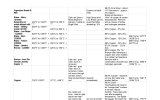daniel_k_malloy
Active Member
I don't have an AMP, and probably won't (if ever) for a while because I'm broke af.
That thing takes all the "guess" work out of the equation, no doubt.
BUT, I think the machine gets far more credit than its price tag suggests, simply because folks don't reign in their variables when annealing using other methods, namely, via flame.
I've watched countless videos and read countless articles on the subject. Consistency this, consistency that... yet even from competition shooters, I can't find a single source which consistently dials in on a primary variable when flame annealing. Temperature.
They adjust their flame to a certain contact point on their brass and that's all, then they time it to a tee, but holy hell, they never measure their actual heat output from one session to the next in order to ensure they're annealing with the same flame as they did previously. A minor knob adjustment can result in a 50-200 degree variance, yet they don't measure this?
Easy peezy from one batch to the next without blowing $1500 on something you can literally build yourself for $100 worth of Amazon parts.
1. Maintain same distance from case mouth to tip of torch.
2. Maintain height of flame... where it hits the case.
3. Maintain time in the flame.
4. FOR THE LOVE OF ALL, maintain consistent heat output. Measure the flame temp. Why does nobody measure flame temp from one session to the next? Everything else is irrelevant if you'd not setting your flame the same way emery time.

That thing takes all the "guess" work out of the equation, no doubt.
BUT, I think the machine gets far more credit than its price tag suggests, simply because folks don't reign in their variables when annealing using other methods, namely, via flame.
I've watched countless videos and read countless articles on the subject. Consistency this, consistency that... yet even from competition shooters, I can't find a single source which consistently dials in on a primary variable when flame annealing. Temperature.
They adjust their flame to a certain contact point on their brass and that's all, then they time it to a tee, but holy hell, they never measure their actual heat output from one session to the next in order to ensure they're annealing with the same flame as they did previously. A minor knob adjustment can result in a 50-200 degree variance, yet they don't measure this?
Easy peezy from one batch to the next without blowing $1500 on something you can literally build yourself for $100 worth of Amazon parts.
1. Maintain same distance from case mouth to tip of torch.
2. Maintain height of flame... where it hits the case.
3. Maintain time in the flame.
4. FOR THE LOVE OF ALL, maintain consistent heat output. Measure the flame temp. Why does nobody measure flame temp from one session to the next? Everything else is irrelevant if you'd not setting your flame the same way emery time.

